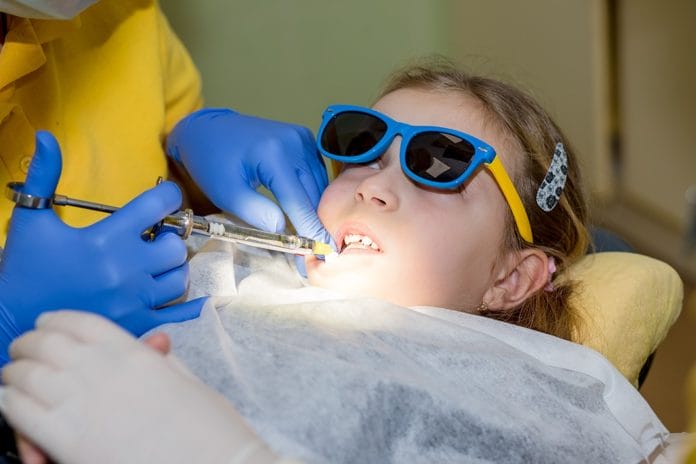A recent study entitled Effect Of Precooling On Pain During Local Anesthesia Administration In Children: A Systematic Review addresses the use of lidocaine in children before injections of anesthesia to lessen both anxiety or pain and suggests an alternative and more natural method, if applicable, to anesthtize the tissue of children at injection sites.
What effect does pre-cooling have on the pain levels of children during dental procedures?
The Study
A variety of children, aged five to fourteen, were either given lidocaine before their injections or a pre-cooling procedure on the tissue completed simply with ice or refrigerant spray applied directly to the injection sites. Two of the children were given a mixture of lidocaine and pre-cooling procedures before their injection.
These pre-cooling practices were then compared to current practices, such as vibratory counter stimulation, topical anesthesia, a mixture of the two, or nothing at all. Each dentist usually has their own preferred method for anesthetizing their patients’ mouths, but the decisions are usually made based on what they have been taught and what they perceive through experience to be most effective.
The ice group would apply the ice to a particular area for around 60 to 120 seconds. The refrigerant was applied for 5 to 10 seconds (and doesn’t taste very well). The needle gauges used were from sizes 25 to 27, and the injections were given in either the maxilla or mandible, and even in both jaws. The injection types were infiltration and block.
Results of Precooling Before Local Injection on Subjective Pain
The Visual Analogue Scale, or VAS, was used to measure the effectiveness of each treatment. VAS is the only way to measure subjective pain, and information is gathered directly from the observations of the dentists, and the memories patients have of past dental treatments.
The pain was decreased, obviously, when comparing the use of ice pre-cooling to the control group who received no pre-treatment at all before their injections. Injection sites do matter when comparing pre-cooling to the topical anesthetic, but again, many studies perceived pain levels were again lower in patients who were given pre-cooling measures.
There were studies, though, that found perceived pain levels were slightly lower in patients who received the topical anesthetic, but the difference was in the location of the injection. The research team has decided, after evaluating each study and their practices, that in the majority of circumstances, pre-cooling did decrease subjective pain levels more than just using the topical anesthetic.
Adding topical anesthetic to pre-cooling procedures significantly reduce observed and reported pain when compared to the use of topical anesthetic alone. This may be the best procedure to use in order to decrease the children’s pain and anxiety and make them more comfortable in the dental chair.
Effects of Precooling Before Local Injection on Objective Pain
Sound Eye Motor scale, or SEM, is a practice used to measure objective pain levels in children during injections. The movement of the eyes, the sounds the patients make, and the ways that they move during the procedure are observed and measured by dentists and hygienists to determine a patient’s pain levels.
Using SEM as a measurement scale, many researchers came up with different conclusions when it comes to pre-cooling versus topical anesthetic alone, culminating in mixed responses. Some studies supported the use of pre-cooling over topical anesthesia, and some studies suggested that using topical is more effective than any pre-cooling measures. This causes questions when it comes to the validity of SEM as an objective pain measuring scale.
But, adding the topical anesthetic to pre-cooling measures universally and significantly lowers pain levels than in using the topical or pre-cooling alone.
Precooling is an effective tool, especially when combined with a 20% topical benzocaine anesthetic, to decrease a child’s pain levels and even the anxiety that they suffer before coming into the office. A child’s anxiety can increase their level of perceived pain. When we take active steps to decrease their pain at every visit, they will become more comfortable with dental treatment. It’s a win-win situation for everyone.
















